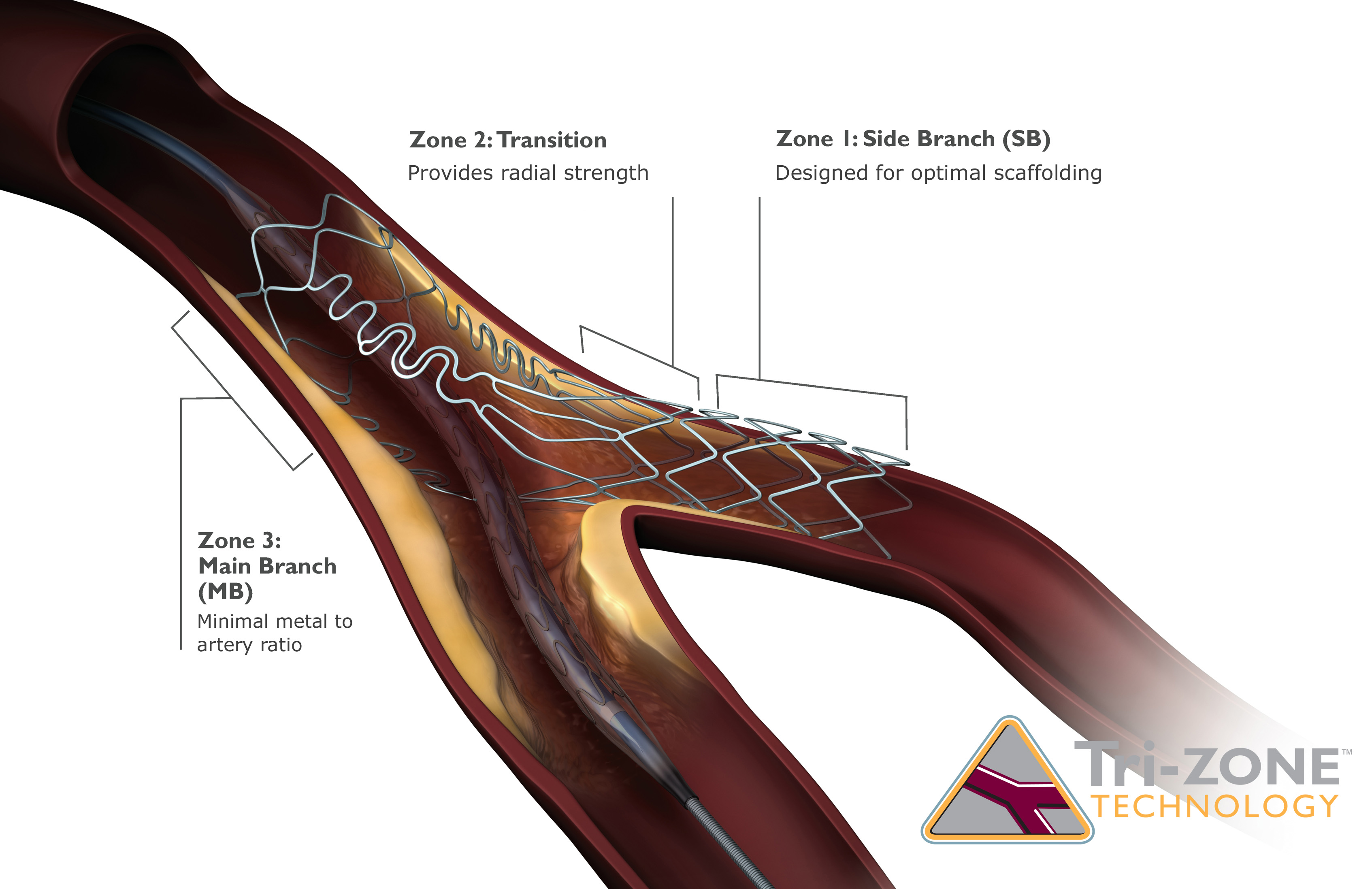DESIGNED TO TREAT A WIDE SPECTRUM OF BIFURCATED LESIONS.
The Tryton Side Branch Stent is deployed in the side branch artery using a standard single-wire, balloon-expandable stent delivery system. The open architecture of the Tryton stent allows for integration of a conventional drug eluting stent for the main vessel.
“This is the first bifurcation stent out there that I think has been effective and simple to use.”Dr. James HermillerView Deployment Sequence

EASE OF USE AND PROCEDURAL CONTROL RESULT IN PREDICTABLE ANGIOGRAPHIC OUTCOMES AND ACUTE DEVICE SUCCESS
CAUTION: Federal (USA) law restricts this device to sale by or on the order of a physician. For healthcare professionals only. Prior to use, refer to the instruction for use supplied with this device for indications, contraindications, side effects, suggested procedure, warnings and precautions. WARNINGS: Use of the Tryton Side Branch Stent in appropriately sized main vessels and side branches is required for safe and effective performance of the device. Do not use the Tryton Stent in small side branches [<2.50 mm in diameter by visual assessment or <2.25 mm in diameter by quantitative coronary angiography (QCA)], as its use may lead to an increased risk of adverse cardiac events such as myocardial infarction and the need for repeat revascularization. To confirm appropriately-sized side branch diameters, the diameter of the pre-dilation balloon inflated to nominal pressure may be used as a reference. Alternatively, the use of quantitative imaging methods such as on-line quantitative coronary angiography, intravascular ultrasound or optimal coherence tomography should be considered. Use of the Tryton Side Branch Stent, as with percutaneous coronary stent implantation procedures in general, is known to be associated with the following risks: Vessel thrombosis. Increased length of hospital stay relative to those of coronary balloon angioplasty alone. Judicious selection of patients to receive this device rather than balloon angioplasty alone is strongly advised. infection secondary to contamination of the stent may lead to thrombosis, pseudoaneurysm or rupture. The stent may cause spasm, distal embolization, thrombus, or could migrate from the site of implantation. Excessive dilatation of the artery may cause vessel rupture and life-threatening bleeding. Stents may not be fully expanded during deployment, particularly in resistant lesions. Stent dislodgment from the balloon surface during deployment and/or dislodgment from the target site post-deployment can occur. Major bleeding.
